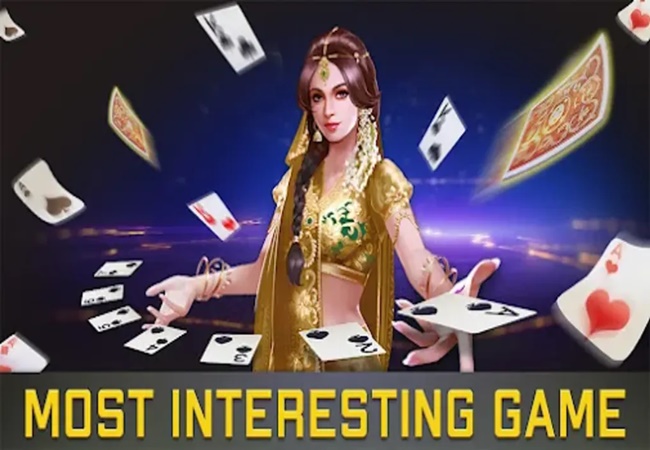
Teen Patti, often referred to as Indian Poker, is a traditional card game deeply embedded in the cultural fabric of India. Over the years, its popularity has transcended from small towns and villages to the bustling metropolitan life of Mumbai. “Teen Patti Mumbai” isn’t just about a game; it’s about the vibrant blend of tradition and modernity, reflecting the dynamic spirit of the city itself. Teen Patti India exemplifies this widespread appeal and cultural integration across various regions.
The Origins of Teen Patti
Teen Patti, which means “three cards” in Hindi, is believed to have originated in the Indian subcontinent. The game has similarities to the British game “Three Card Brag,” but has developed its unique rules and style over time. Traditionally played during festivals and family gatherings, Teen Patti has been a staple in Indian households for generations.
In its simplest form, Teen Patti involves betting on the best possible three-card hand, and the player with the highest hand wins the pot. The game’s rules are straightforward, making it accessible to people of all ages and backgrounds.
Mumbai: The Melting Pot of Cultures
Mumbai, the financial and entertainment capital of India, is known for its diverse population and rich cultural heritage. It’s a city that never sleeps, constantly buzzing with activity. This dynamic environment has made Mumbai a fertile ground for various forms of entertainment, including card games like Teen Patti.
In Mumbai, Teen Patti isn’t just a game; it’s an experience. From high-stakes games in plush South Mumbai apartments to friendly matches in the bustling chawls of the suburbs, Teen Patti finds a place in every nook and cranny of the city. The game is a microcosm of Mumbai’s spirit – competitive yet inclusive, traditional yet ever-evolving.
Teen Patti in Bollywood
Bollywood, Mumbai’s thriving film industry, has played a significant role in popularizing Teen Patti. Numerous movies have featured the game, either as a central theme or a side plot, showcasing the game’s high drama and tension. Films like “Teen Patti” (2010), starring Amitabh Bachchan and Ben Kingsley, have brought the game to the global stage, highlighting its appeal and the intricate strategies involved.
In Bollywood parties and events, Teen Patti is a common fixture. Celebrities often indulge in the game during Diwali and other festive occasions, adding a glamorous touch to this traditional pastime. This blend of cinema and card games has cemented Teen Patti’s place in Mumbai’s cultural landscape.
The Social Aspect of Teen Patti
In Mumbai, Teen Patti is more than just a game of chance; it’s a social activity that brings people together. The game is often played during festivals like Diwali, where friends and family gather to celebrate and bond over cards. It serves as a means of socialization, breaking down barriers and fostering camaraderie among players.
In the chawls and housing societies of Mumbai, Teen Patti is a common evening pastime. Residents, regardless of age or socioeconomic status, come together to play, share stories, and build community ties. The game’s simplicity and the minimal equipment required make it accessible to everyone, further enhancing its popularity.
The Rise of Online Teen Patti
With the advent of the internet and smartphones, Teen Patti has found a new platform – online gaming. Mumbai, being a tech-savvy city, has embraced this digital transformation wholeheartedly. Online Teen Patti apps and websites have mushroomed, offering players the convenience of playing anytime, anywhere.
Online platforms have also introduced variations of the traditional game, adding new dimensions and challenges. These platforms often host tournaments with substantial prize money, attracting a wide audience and raising the stakes. The digital version of Teen Patti retains the essence of the traditional game while catering to the fast-paced lifestyle of Mumbai’s residents.
The Economic Impact
Teen Patti, both offline and online, has a significant economic impact. The traditional game involves small bets among friends and family, but in high-stakes environments, the money involved can be substantial. Private games in Mumbai’s elite circles can see huge sums of money changing hands, contributing to the informal economy.
Online Teen Patti platforms have turned the game into a lucrative business. These platforms generate revenue through in-app purchases, advertisements, and tournament fees. The success of these platforms has also led to job creation in areas such as app development, customer service, and digital marketing.
Teen Patti and the Law
The legality of Teen Patti has been a subject of debate in India. While gambling is heavily regulated and mostly illegal in many states, Teen Patti is often seen in a grey area. Social games played for fun are generally tolerated, but organized gambling can attract legal scrutiny.
In Mumbai, the police periodically crack down on illegal gambling dens, but the game continues to thrive in private settings and online platforms. The ambiguous legal status of Teen Patti reflects the broader challenges of regulating gambling in India, where traditional games have deep cultural roots.
The Future of Teen Patti in Mumbai
The future of Teen Patti in Mumbai looks promising. The game’s ability to adapt to changing times and technology ensures its continued relevance. As online platforms innovate and expand, Teen Patti is likely to reach even broader audiences, both within India and internationally.
Moreover, the game’s cultural significance means it will continue to be a part of festive celebrations and social gatherings. Teen Patti’s enduring appeal lies in its blend of simplicity and excitement, making it a timeless pastime for Mumbaikars.
In conclusion, Teen Patti Mumbai is a testament to the city’s unique blend of tradition and modernity. The game encapsulates the spirit of Mumbai – a city that respects its heritage while embracing the future. Whether played in the cozy confines of a home, the high-stakes environments of elite circles, or the digital realm, Teen Patti remains an integral part of Mumbai’s vibrant culture.
